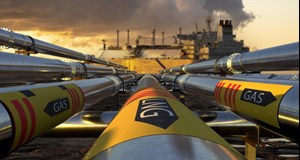U.S. LNG to meet Europe’s energy needs in short and long term
WASHINGTON D.C. — As global natural gas markets continue to tighten and Europe braces for a challenging winter, the American Petroleum Institute (API) and the International Association of Oil and Gas Producers (IOGP) today released a new analysis of Europe’s natural gas market and highlighted the immense potential of U.S. liquefied natural gas (LNG) to help Europe strengthen its energy security. The study, conducted by Rystad Energy, found that while the short-term outlook is challenging, new long-term supplies from abundant and affordable resources could fully replace Russian natural gas and rebalance the European market.
“As Russia holds European energy supplies hostage, this study shows how critical American natural gas will be to lasting global energy security,” API Vice President of Natural Gas Markets Dustin Meyer said. “To harness the power of U.S. LNG, we need smart and consistent policy support here at home, including strengthening domestic pipeline networks and energy export facilities, that will ensure both American consumers and global allies have access to the reliable energy that powers our modern world.”
“The EU needs to secure alternative supplies now if it wants to fully phase out Russian gas imports by 2027. That means acting immediately to support domestic production, secure long-term LNG contracts, and fix remaining infrastructure bottlenecks. Any further delay will extend the suffering our continent is currently experiencing and increases the risk of economic and societal damage. Industry is particularly hard hit.” said François-Régis Mouton, IOGP’s Regional Director for Europe.
The study, “Rebalancing Europe’s gas supply: opportunities in a new era,” shows that abundant and affordable global natural gas resources will make it possible to substitute Russian imports before 2030 but warns that Europe will face a tight natural gas market over the next couple of years with limited short-term options to replace Russian supply. The study shows:
Without Russian pipeline gas, Europe’s demand for LNG is projected to increase 150% from 2021-2040 as overall natural gas demand declines more slowly than domestic production and non-Russian pipeline imports.
LNG is projected to meet approximately 50% of Europe’s natural gas demand through 2030. After 2030, LNG will meet an even greater share, reaching about 75% of demand by 2040.
Growth in European LNG demand will be more than double the 50 bcm (4.8 bcfd) specified in the March joint agreement between the Biden administration and the EU. While US LNG is already flowing to Europe at record levels, significantly more will be required to fully rebalance European gas markets.
The decisions European and U.S. policymakers make today will impact Europe’s ability to rebalance its natural gas market with dependable, affordable and sustainable energy in the years to come. The study concludes:
To meet the shared energy security commitments of the U.S. and the EU, the U.S. will need to expand its LNG export capacity and the EU will need to expand its import capacity over the next several years.
Long-term LNG purchases and infrastructure contracts are crucial to ensuring a stable supply of energy and should be supported by an appropriate European legal framework.
Timeliness and transparency across the permitting and approval process for the full natural gas and LNG value chain is critical to helping the United States meet its commitments and strengthen global energy security.
U.S. proved reserves of natural gas have increased nearly every year since 2000 due to advancements in natural gas exploration and production technologies. According to the EIA, while U.S. natural gas consumption is expected to average a record 86.6 Bcfd in 2022, steady gains in drilling activity have boosted U.S. natural gas production to near record highs, thus ensuring a well-supplied domestic market while simultaneously meeting rising global LNG demand.



